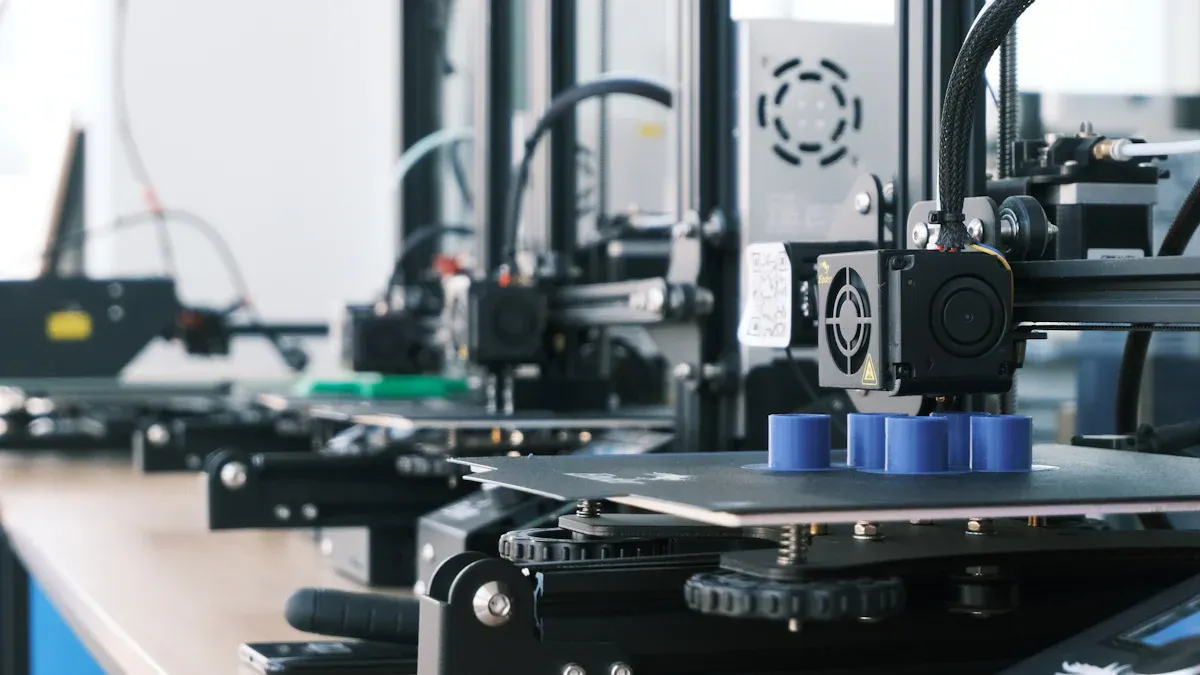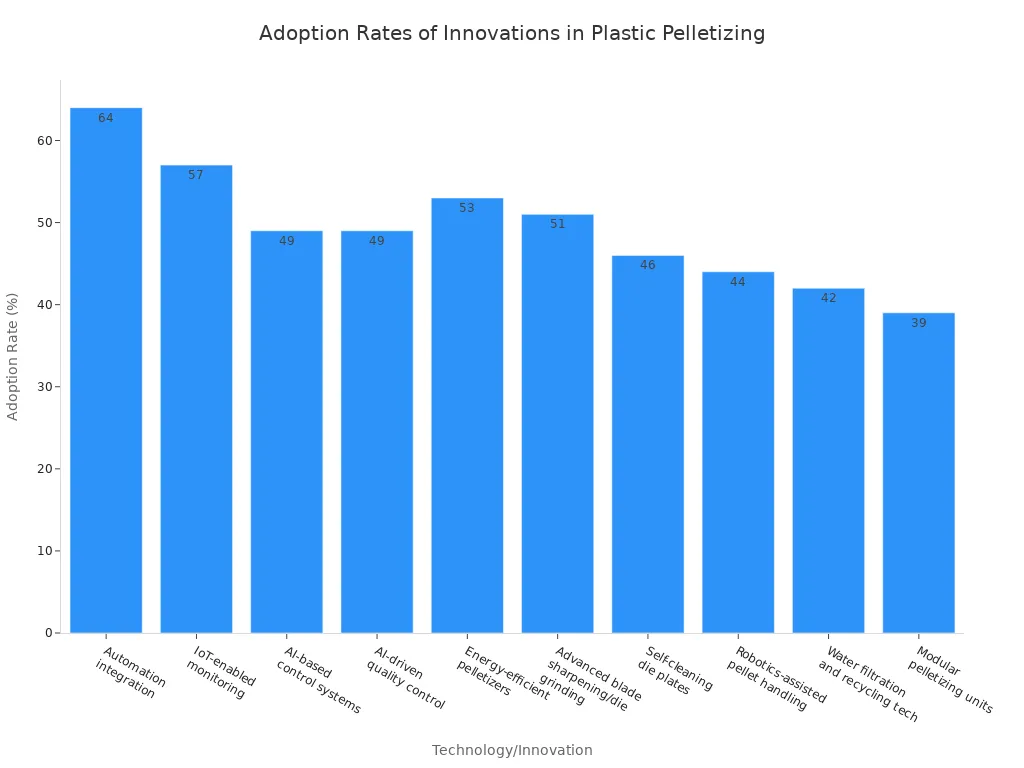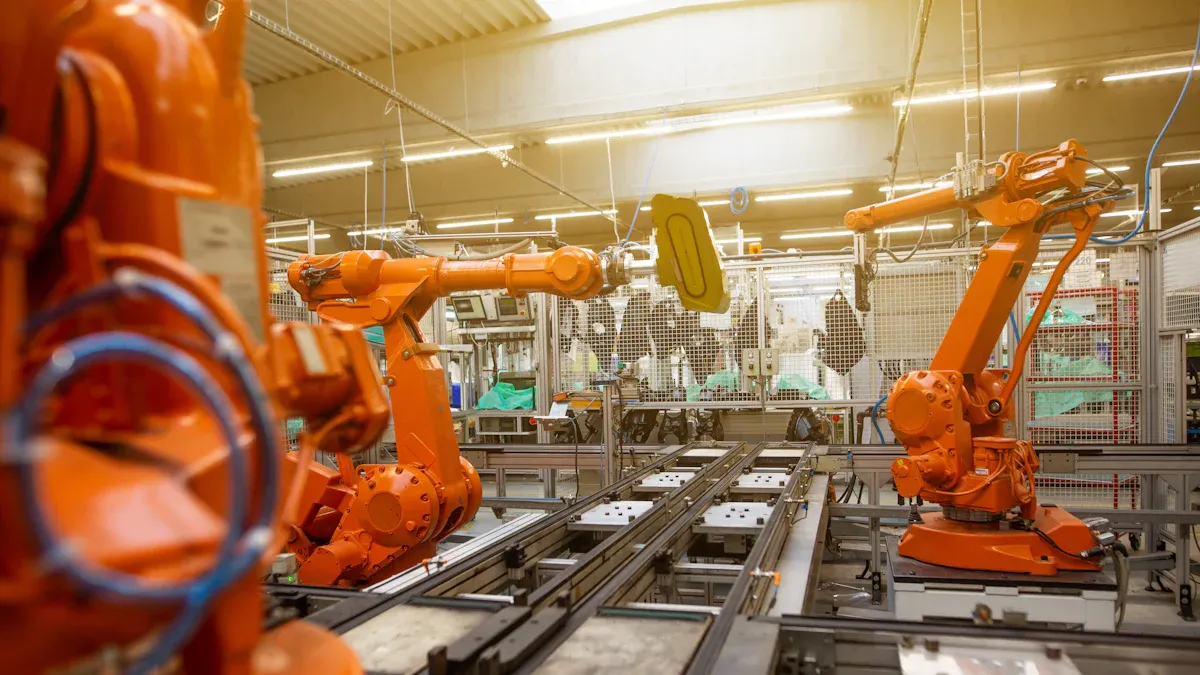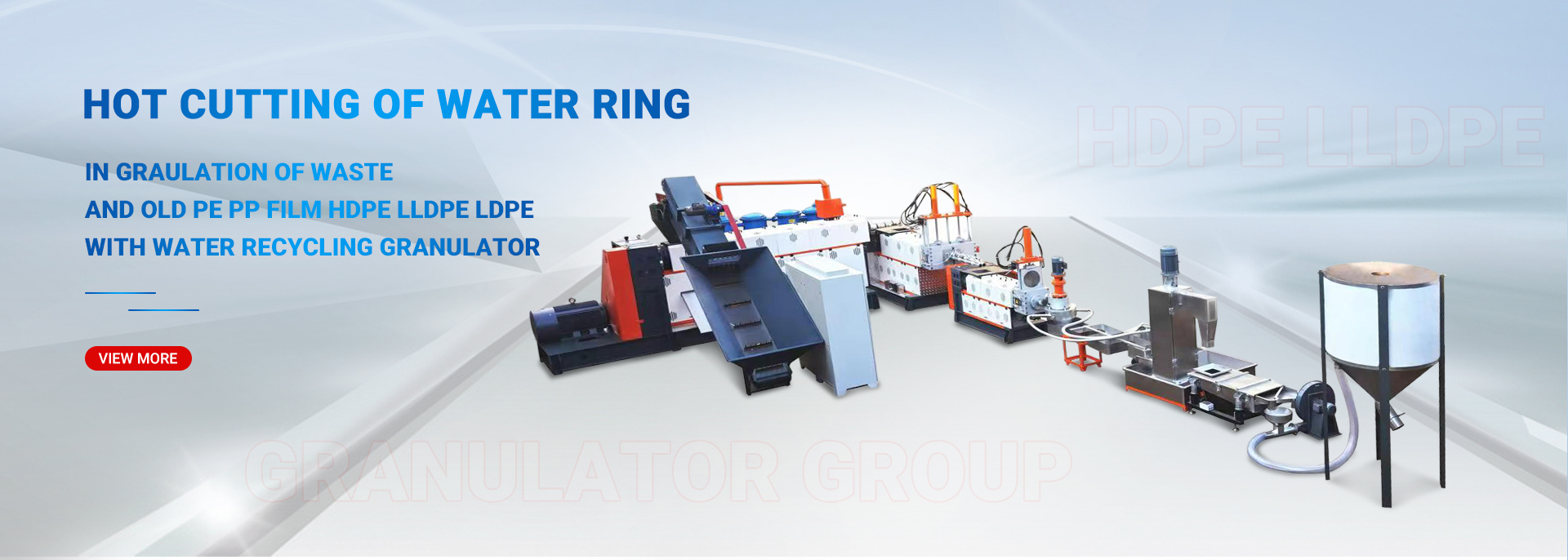
Smart technology transforms plastic pelletizing by boosting efficiency and reliability.
- AI and machine learning enable predictive maintenance, real-time analytics, and error reduction for the Granulating Machine For Ps Recycled Scrap Extruding Ldpe Pelletizer Line.
- Automation and IoT drive cost savings and operational gains for the Granulating Machine For Ps Recycled Scrap Extrudin.

Key Takeaways
- Smart technology boosts plastic pelletizing by improving efficiency, reducing waste, and ensuring consistent product quality through automation, AI, and IoT.
- AI-driven predictive maintenance cuts downtime and repair costs by detecting equipment issues early and enabling timely repairs.
- IoT and automation enable real-time monitoring and control, helping manufacturers save energy, lower labor costs, and meet sustainability goals.
Smart Technology in Plastic Pelletizing

What Smart Technology Means for Pelletizing Machines
Smart technology in plastic pelletizing machines represents a shift toward greater efficiency, precision, and sustainability. Manufacturers now integrate advanced automation and real-time monitoring systems to optimize production and reduce energy consumption. These systems allow machines to adjust parameters instantly, ensuring consistent pellet quality and minimizing waste. For example, VFD-controlled screw conveyors automate material feeding, maintaining steady rates and preventing blockages. Dual-zone vacuum degassing systems remove volatiles and moisture, which improves the quality of the final pellets. Advanced two-stage filtration systems further enhance output by removing contaminants and reducing maintenance needs.
Smart technology not only streamlines operations but also supports sustainability goals by lowering energy use and material waste.
Core Elements: AI, Automation, and IoT
The core elements—AI, automation, and IoT—work together to transform pelletizing machine performance.
- AI and machine learning: These technologies improve sorting accuracy and reduce contamination by analyzing data from sensors and learning from each cycle. Machines adapt to different plastic types and impurities, producing higher quality pellets.
- Automation: Robotics and automated controls reduce manual labor, increase safety, and ensure consistent throughput. Automated systems can lower labor costs by about 30% and achieve material purity levels above 95%.
- IoT connectivity: Real-time monitoring and remote diagnostics enable predictive maintenance, minimizing downtime and extending machine life. IoT also supports continuous performance analysis, optimizing energy use and output quality.
When these elements interact, they create a synergistic effect. Sensors provide real-time data, AI-driven controls make autonomous adjustments, and integrated systems ensure reliability and precision. This synergy leads to machines that adapt quickly, maintain high standards, and deliver consistent results, setting new benchmarks for the industry.
Automation Enhancing Efficiency and Consistency
Automated Process Control Systems
Automated process control systems have become essential in modern plastic pelletizing plants. These systems use programmable logic controllers (PLCs), sensors, and human-machine interfaces (HMIs) to monitor and adjust production variables in real time. Operators benefit from precise control over temperature, pressure, and feed rates, which leads to stable and repeatable processes. Although automation requires significant upfront investment, it reduces long-term operational costs by lowering labor expenses and increasing throughput. Energy-efficient machinery and preventive maintenance strategies further help manage overhead costs, making automation a smart investment for manufacturers seeking higher productivity and lower expenses.
Minimizing Human Error in Pelletizing
Automation significantly reduces human error in pelletizing operations. Advanced color sorting systems use high-resolution cameras and software to detect and remove off-spec pellets, ensuring only quality products move forward. AI-driven robotics and automated sorting streamline operations, minimize material waste, and deliver consistent results. The following table highlights key automation components and their roles:
| Automation Component | Role in Reducing Human Error and Improving Process Control |
|---|---|
| PLC Automation Control | Real-time monitoring and adjustments, enhancing stability and reducing mistakes |
| Automatic Weighing System | Consistent input volumes, preventing manual measurement errors |
| Automatic Screen Changer | Continuous operation, reducing manual downtime |
| Automatic Pellet Cutter | Uniform pellet size, minimizing variability |
| Centralized Control (PLC + HMI) | Seamless control, reducing oversight and errors |
Automation also improves safety and compliance by limiting manual intervention, reducing exposure to hazards, and ensuring regulatory standards are met.
Streamlined Production Workflows
Streamlined workflows in pelletizing facilities drive long-term operational benefits. Integrated systems enhance productivity by fitting seamlessly into existing processes. Custom solutions maximize efficiency and minimize costs. Regular maintenance and inspections prevent costly repairs and maximize uptime. Facilities that adopt advanced pelletizing machinery experience improved throughput, reduced energy consumption, and lower labor costs. Enhanced control over pellet size and quality supports downstream manufacturing and reduces waste. These practices collectively promote profitability, sustainability, and adaptability in a competitive market.
AI for Predictive Maintenance and Optimization
Predictive Maintenance to Reduce Downtime
AI-driven predictive maintenance transforms how manufacturers manage equipment health. These systems monitor vibration and temperature sensors continuously, detecting early signs of wear in bearings, gearboxes, and motors. Maintenance teams receive real-time alerts, allowing them to plan repairs before failures occur. This proactive approach reduces unplanned downtime, minimizes product loss, and increases asset reliability. AI models learn the unique behavior of each machine, outperforming traditional threshold-based systems by providing earlier warnings and reducing false alarms. Maintenance operations become more efficient, with repairs scheduled to align with production needs. As a result, companies experience lower repair costs and improved uptime.
- Early detection of mechanical issues prevents catastrophic failures.
- Continuous monitoring identifies subtle changes missed by manual inspections.
- Real-time data analysis supports proactive maintenance planning.
- Integration with production schedules further reduces downtime.
Real-Time Process Optimization
AI platforms optimize plastic pelletizing by adjusting critical parameters such as temperature and screw speed in real time. These autonomous systems reduce scrap rates and improve product consistency. Machine learning algorithms predict quality outcomes and identify root causes of defects, enabling timely corrections. Industrial pelletizers equipped with AI maintain precise temperature control, preventing material degradation and ensuring uniform pellet size. Energy-saving designs and heat recovery features lower energy consumption by up to 30%. Plants benefit from higher yields, reduced waste, and improved sustainability.
| Aspect | Description |
|---|---|
| Integrated plant design | Synchronizes recycling steps to optimize throughput and minimize material loss. |
| Intelligent energy efficiency | Dynamically adjusts system components to reduce energy use and optimize extruder loading. |
| Automated material flow | Regulates flow during maintenance, preventing waste and unplanned downtime. |
| Smart performance monitoring | Ensures stable, high-quality output and maximizes resource utilization. |
Data-Driven Quality Control
Data-driven quality control systems use AI and IoT to monitor and adjust pelletizing processes. For example, convolutional neural networks and IoT technology control roasting parameters, reducing fluctuations and improving pellet uniformity. This leads to higher first-grade product rates and greater production stability. Companies like Braskem use machine learning models to analyze variables such as density and melt flow in real time. Operators receive instant feedback, allowing them to reduce off-spec products and speed up product transitions. These systems enhance profitability and sustainability by ensuring consistent, high-quality output.
IoT for Real-Time Monitoring and Insights

Remote Monitoring of Pelletizing Operations
IoT technology empowers manufacturers to oversee pelletizing operations from any location. Smart sensors and cloud connectivity provide instant access to machine status and performance data. Operators can monitor temperature, pressure, and speed in real time, making it easier to identify issues before they escalate. This remote capability proves especially valuable for companies with multiple or geographically dispersed facilities.
Key advantages of IoT-enabled remote monitoring include:
- Optimization of operational performance through real-time data.
- Predictive maintenance that reduces costly downtime.
- Improved efficiency and regulatory compliance via digital transformation.
- Enhanced control for multi-site operations.
| Key Advantage | Explanation |
|---|---|
| Real-Time Data Collection | Sensors capture critical parameters such as temperature, pressure, and speed in real time. |
| Cloud Connectivity | Enables remote access to machine status and performance data via secure IoT networks for proactive decisions. |
| Predictive Maintenance | AI and machine learning analyze data to predict failures, reducing downtime and maintenance costs. |
| Automated Quality Control | Vision systems and sensors detect defects in real time, triggering corrective actions automatically. |
| Enhanced Traceability & Compliance | Automated record-keeping supports audits and regulatory adherence. |
| Energy Savings | Data-driven optimizations reduce resource consumption and operational expenses. |
| Improved Decision-Making | Access to real-time and historical data helps refine processes and innovate faster. |
| Scalable and Flexible Production | Modular design and multi-line coordination allow easy adaptation to changing production needs. |
Performance Data Collection and Analysis
IoT systems collect large volumes of process data automatically, enabling continuous 24/7 monitoring. Smart sensors track parameters such as moisture, drying efficiency, and environmental conditions. Machine learning algorithms analyze this data to optimize equipment performance and energy use. Operators gain insights into how factors like humidity and dust affect product quality, allowing them to adjust processes for better results.
- Continuous monitoring supports predictive maintenance and early issue detection.
- Data analysis helps reduce material waste and environmental impact.
- Integration with Industry 4.0 frameworks enables lifecycle analysis and sustainability tracking.
Proactive, Data-Driven Decision-Making
Manufacturers use insights from IoT data to make proactive decisions. Real-time and historical data reveal trends and highlight areas for improvement. Teams can adjust production schedules, maintenance routines, and process parameters based on accurate information. This approach leads to higher product quality, lower energy consumption, and greater operational efficiency.
IoT-driven decision-making transforms plastic pelletizing into a smarter, more sustainable process, supporting both productivity and environmental goals.
Practical Benefits for Manufacturers
Lower Downtime and Maintenance Costs
Manufacturers experience significant reductions in downtime and maintenance costs when they implement smart technology in plastic pelletizing operations. AI-driven predictive maintenance systems monitor equipment health continuously. These systems detect early signs of wear or malfunction, allowing maintenance teams to address issues before they escalate. As a result, unplanned shutdowns become rare, and production schedules remain stable.
Automated process controls also streamline maintenance routines. Operators receive real-time alerts and diagnostics, which help them plan interventions efficiently. This proactive approach extends the lifespan of critical components such as motors, gearboxes, and bearings. Maintenance teams can focus on targeted repairs rather than broad, time-consuming inspections.
Smart technology transforms maintenance from a reactive task into a strategic advantage, supporting higher machine availability and lower repair expenses.
Energy Efficiency and Sustainability Gains
Smart technologies deliver measurable improvements in energy efficiency and sustainability for plastic pelletizing plants. Manufacturers leverage AI, automation, and digital solutions to optimize every stage of the process. These advancements enable precise control over energy-intensive operations, reducing unnecessary consumption.
- AI and automation optimize pelletizing by enabling efficiency gains and predictive maintenance.
- Digital solutions support operational simplicity and space-efficient machinery, which enhances energy efficiency.
- Smart technology allows compatibility with various polymers, making it easier to process eco-friendly materials.
- Integration of digital tools facilitates circular economy practices, such as recycling and reusing materials.
- Enhanced quality assurance and traceability help companies meet stricter environmental regulations.
- Real-time data insights and predictive analytics enable faster, data-driven decisions that improve operational efficiency and sustainability.
- Investments in digital infrastructure accelerate the adoption of global environmental standards.
Manufacturers in regions like Asia Pacific use these technologies to meet the rising demand for recycled and biodegradable plastics. By reducing waste and energy use, they align their operations with sustainability goals and regulatory requirements.
Improved Product Quality and Consistency
Smart technology has raised the bar for product quality and consistency in plastic pelletizing. Digital tools integrated with process control systems detect feedstock contamination early, ensuring that only high-purity materials enter the production line. This early intervention maintains product integrity and reduces the risk of defects.
Advanced control systems provide steady asset management and consistent operations. Real-time modeling of feedstock and visibility into process data allow operators to optimize production conditions. High-precision digital valve controllers maintain accurate process set points, which is critical for achieving uniform pellet size and quality.
- Automation platforms integrate advanced instrumentation, ensuring reliable production even under challenging conditions such as high temperature and pressure.
- Predictive maintenance and smart diagnostics prevent unplanned shutdowns, supporting uninterrupted production and consistent output.
- These technologies collectively enhance the quality of recycled plastic pellets, often matching the standards of virgin polymers.
Consistent product quality not only meets customer expectations but also strengthens a manufacturer’s reputation in competitive markets.
Granulating Machine For Ps Recycled Scrap Extruding Ldpe Pelletizer Line: Industry Trends for 2025
Sustainability and Eco-Friendly Processes
Manufacturers now prioritize sustainability in the plastic pelletizing industry. The Granulating Machine For Ps Recycled Scrap Extruding Ldpe Pelletizer Line converts plastic waste into reusable pellets, reducing landfill waste and pollution. Recycling plastic with these machines saves up to 88% of the energy compared to producing new plastic. This process lowers greenhouse gas emissions and supports global efforts to reduce plastic pollution. Regulatory pressures and economic incentives drive companies to adopt recycling technologies. These machines also improve the quality of recycled materials, making them suitable for high-performance applications in packaging, automotive, and construction. Collaboration among manufacturers, recyclers, and stakeholders fosters innovation and strengthens the recycling ecosystem.
- Reduces landfill waste and pollution
- Saves significant energy resources
- Lowers greenhouse gas emissions
- Supports high-quality recycled products
Customization and Flexible Production Lines
Smart technology enables the Granulating Machine For Ps Recycled Scrap Extruding Ldpe Pelletizer Line to offer customization and flexibility. Underwater pelletizing systems feature modular designs that process a wide variety of plastics. Control systems automatically adjust motor speed, temperature, and pressure based on process needs. Strand pelletizing systems allow quick changeovers, making them ideal for short production runs and frequent product changes. Integrated monitoring and calibration ensure consistent operation. Operators receive training to maintain peak performance and adapt to changing requirements. These features help manufacturers respond quickly to market demands and support future scalability.
- Modular design supports multiple plastic types
- Automatic adjustments optimize production
- Quick changeovers reduce downtime
- Easy upgrades enable future growth
Market Growth and Demand for Recycled Granules
The market for recycled plastic granules continues to expand rapidly. The Granulating Machine For Ps Recycled Scrap Extruding Ldpe Pelletizer Line plays a key role in meeting this demand. Market size is projected to grow from USD 26.62 billion in 2024 to USD 62.17 billion by 2034, with a CAGR of about 8.9%. Over 80 large-scale recycling projects launched globally in 2023, each averaging $50 million in investment. Smart pelletizing technologies, such as AI-based contaminant detection, have increased pellet purity from 85% to over 98%. Asia-Pacific leads in both volume and investment, with China recycling 18 million tons of plastic waste in 2023. Automotive, packaging, and construction sectors drive demand for high-quality recycled pellets.
| Metric/Aspect | Details |
|---|---|
| Market Size 2024 | USD 26.62 billion |
| Market Size 2034 | USD 62.17 billion |
| CAGR (2025-2034) | ~8.90% |
| Leading Region | Asia-Pacific |
| Key Applications | Automotive, Packaging, Construction, Consumer Goods |
| Technology Impact | AI-driven sorting, optical sorting, blockchain traceability |
The Granulating Machine For Ps Recycled Scrap Extruding Ldpe Pelletizer Line supports industry growth by delivering high-purity, customizable recycled pellets for a wide range of applications.
Smart technology sets new benchmarks for plastic pelletizing machines.
- Smart gravimetric blending and cloud-based controls improve efficiency, reduce waste, and enhance operational intelligence.
- Manufacturers gain higher productivity, lower labor costs, and better product quality.
- Energy-saving designs and automation support sustainability and help companies stay competitive in a changing industry.
FAQ
What advantages does smart technology bring to plastic pelletizing machines?
Smart technology increases efficiency, improves product quality, and reduces downtime. Manufacturers benefit from real-time monitoring, predictive maintenance, and automated process control.
How does AI help reduce maintenance costs in pelletizing operations?
AI detects early signs of equipment wear. Maintenance teams receive alerts, allowing them to schedule repairs before failures occur. This approach lowers repair costs and extends machine life.
Can manufacturers customize pelletizing machines for different plastics?
Yes. Smart pelletizing machines feature modular designs and adaptive controls. Operators can quickly adjust settings to process various plastic types and meet changing production needs.
Post time: Jul-10-2025



